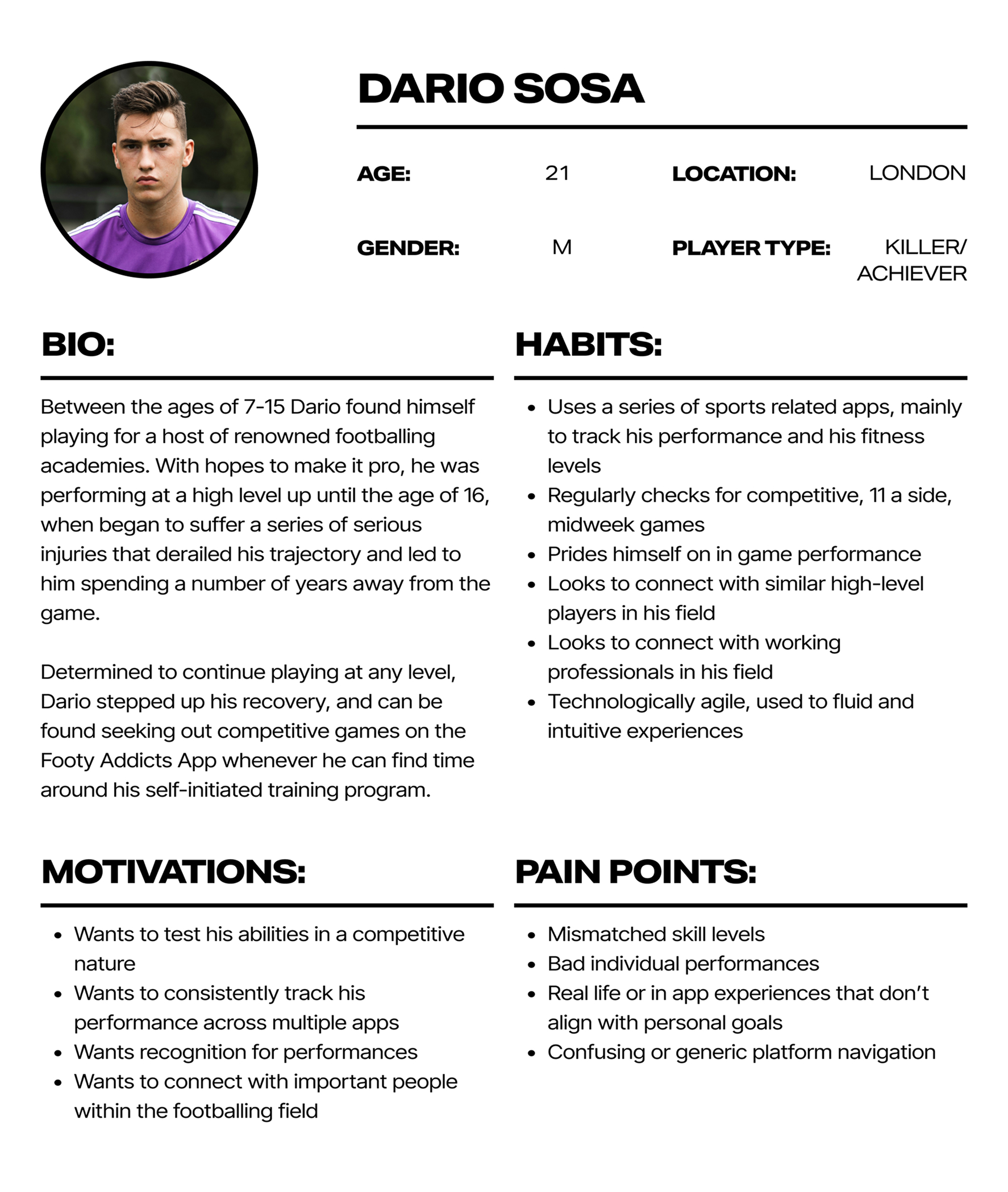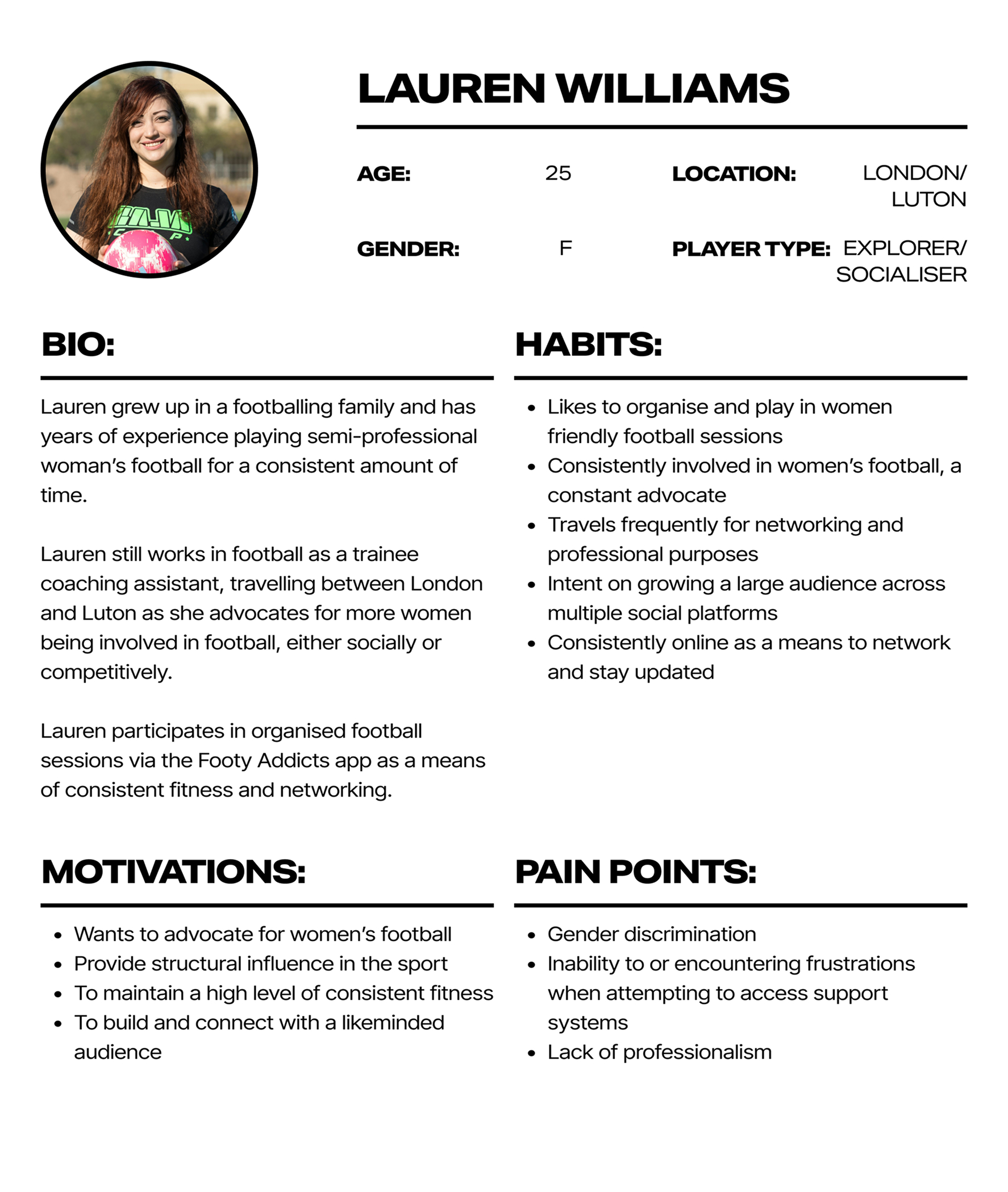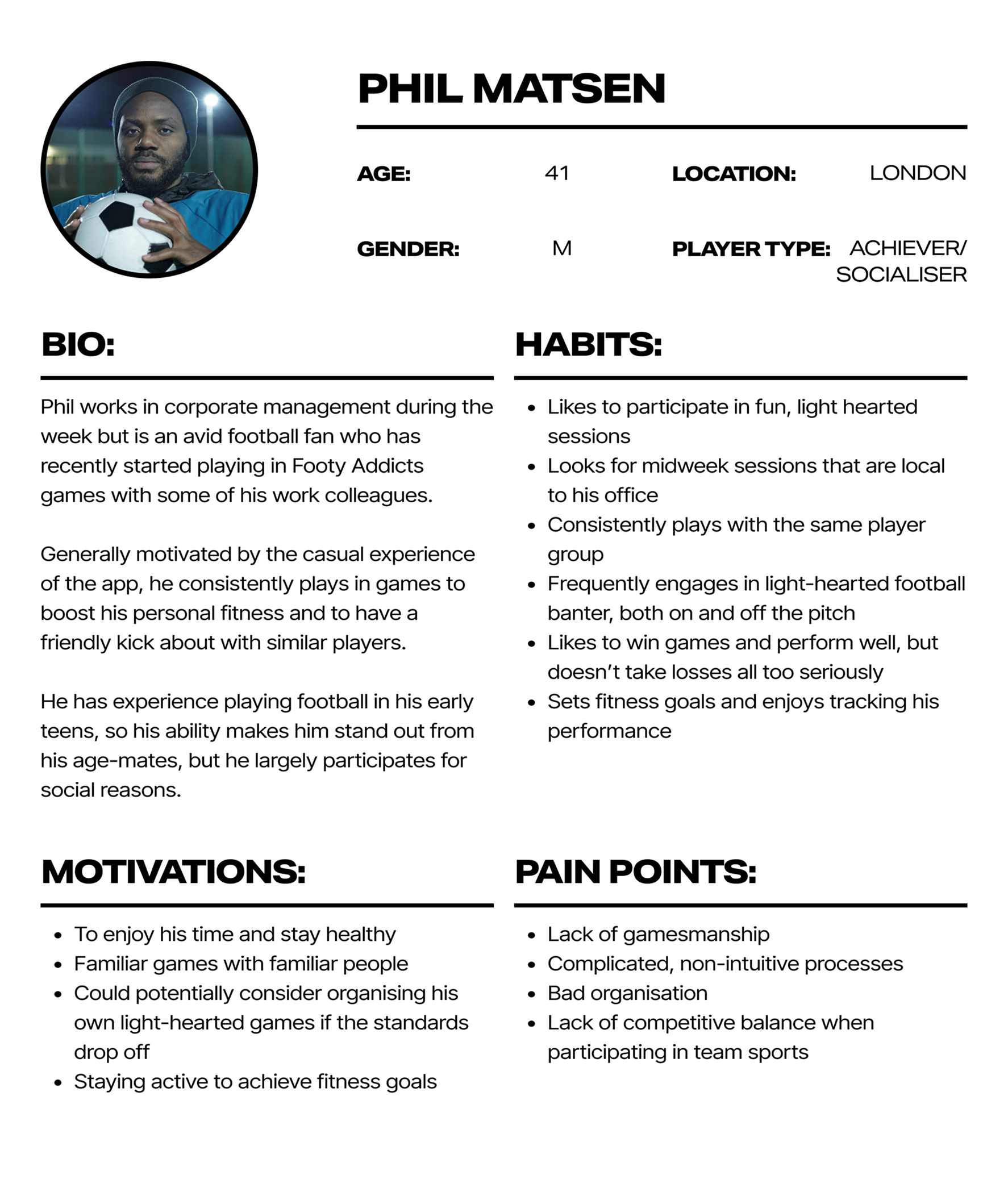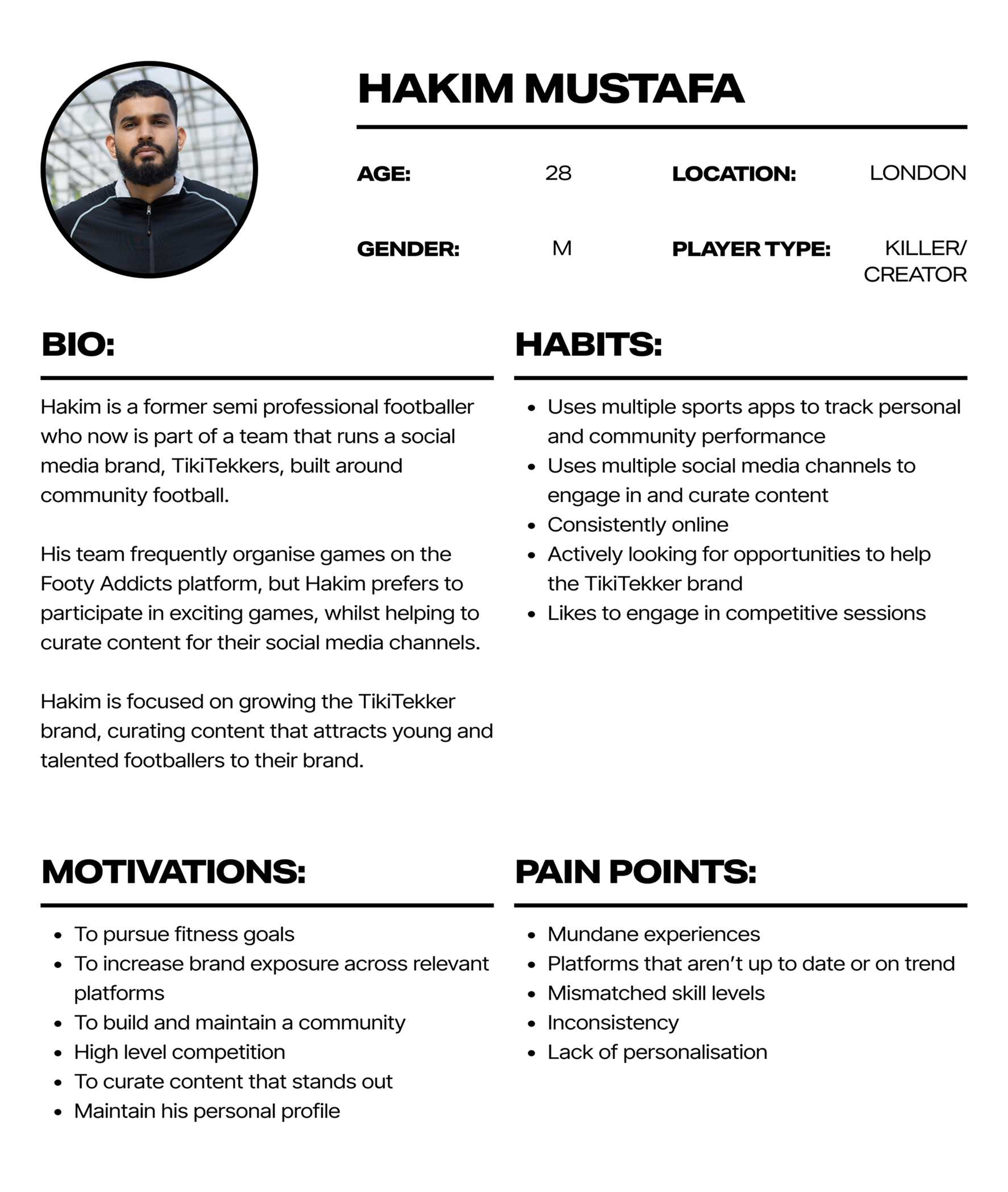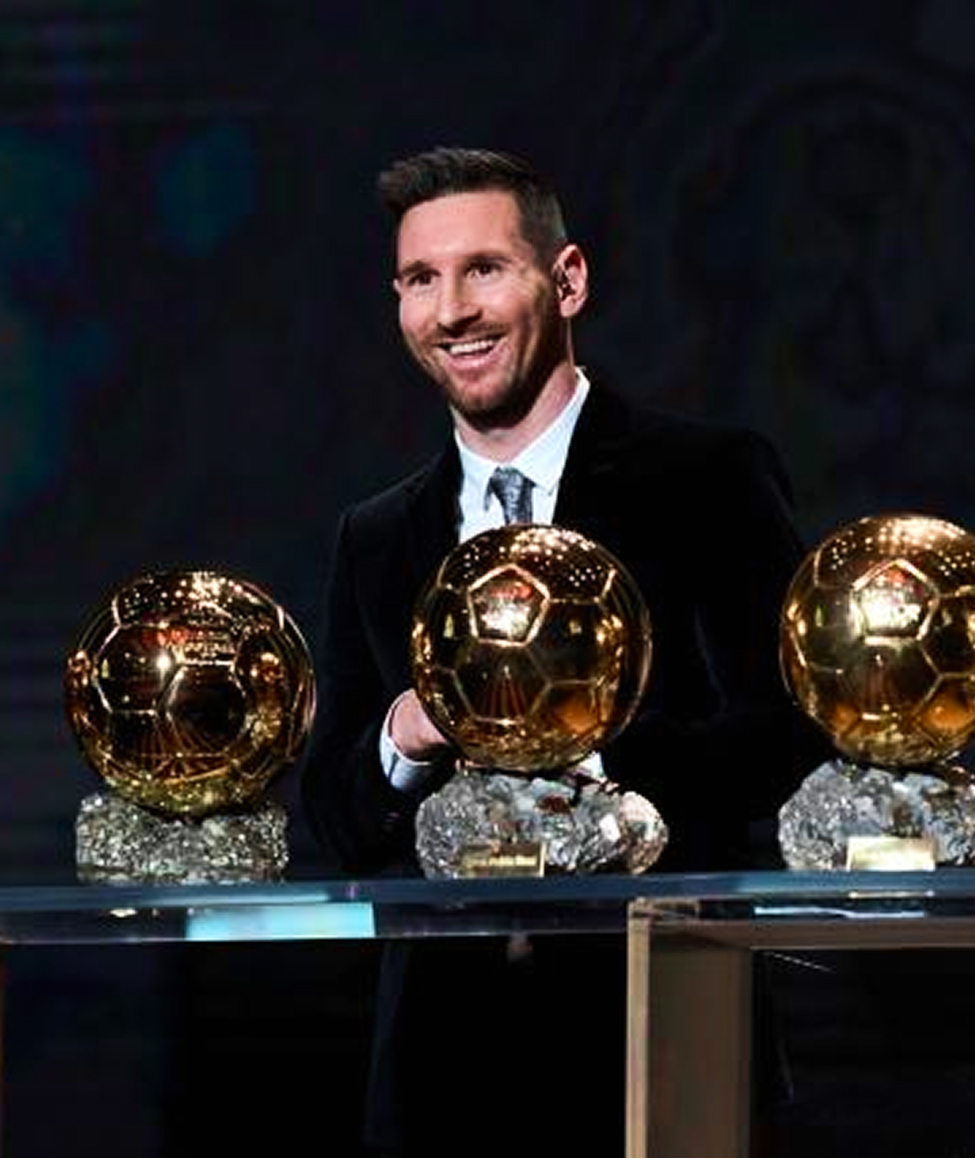A gamified approach to boosting app engagement
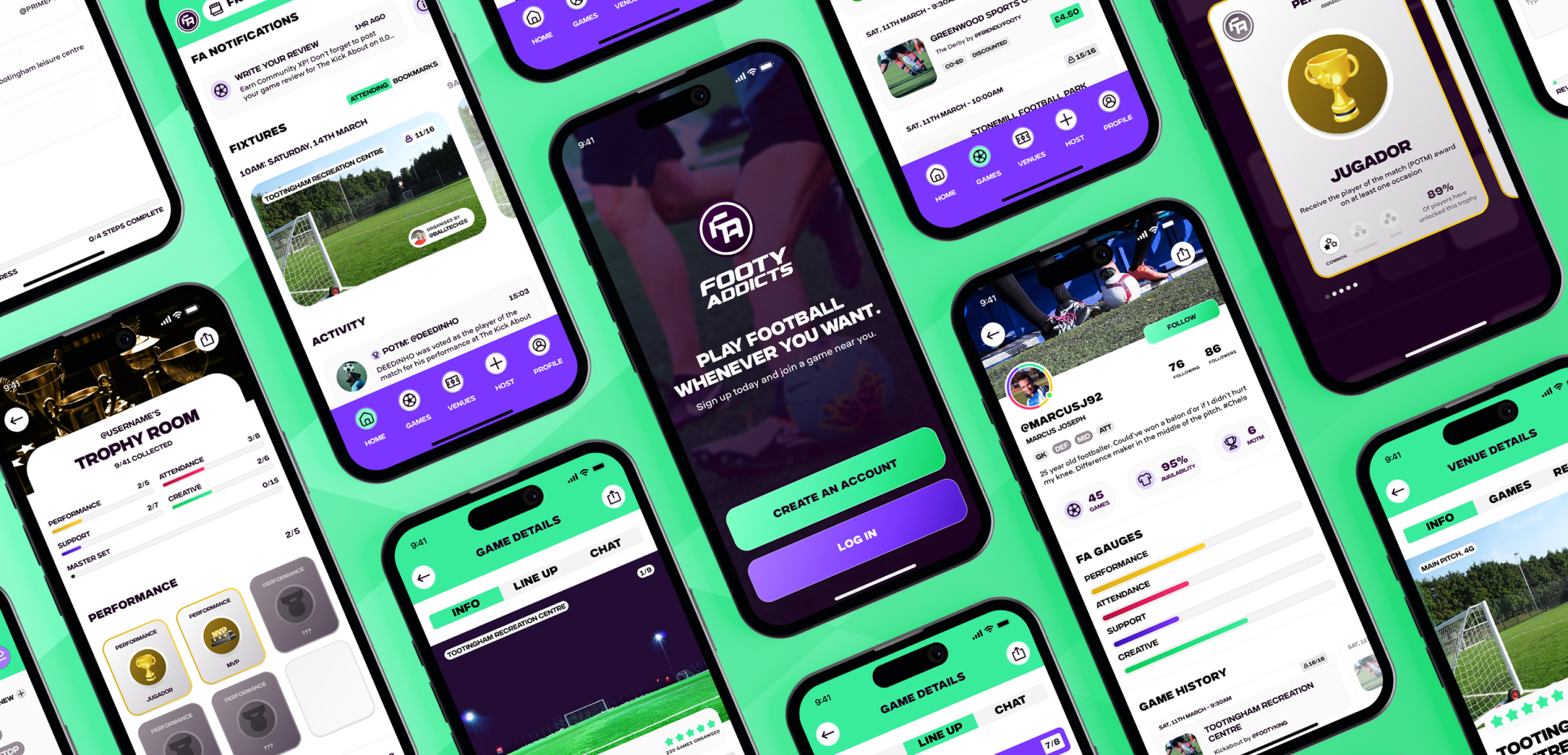
Project Overview
Footy Addicts allows football enthusiasts to find, join, and organise casual football matches in their local area. I wanted to transform their app from a transactional tool into a more engaging, community-focused platform.
Role: Lead UX Researcher & UX/UI Designer
Timeline: 5 weeks
Tools: Figma, Google Meet, Airtable
Team: Partnered with a product designer to facilitate the concept design and branding
Research
Objectives
To understand why user engagement drops between booking and playing a football match, and how to increase retention and social interaction among users.
Key questions:
- How do users create/join games?
- What motivates users to join games?
- What do users value when using the app?
UX Audit
An expert Assesment
I began by reviewing the app myself, covering the essential phases of the user journey to inspect how well users could perform the various tasks throughout the app.
Focus: Game creation, search & discovery, post-match feedback
Objective: Uncover user experience and usability issues
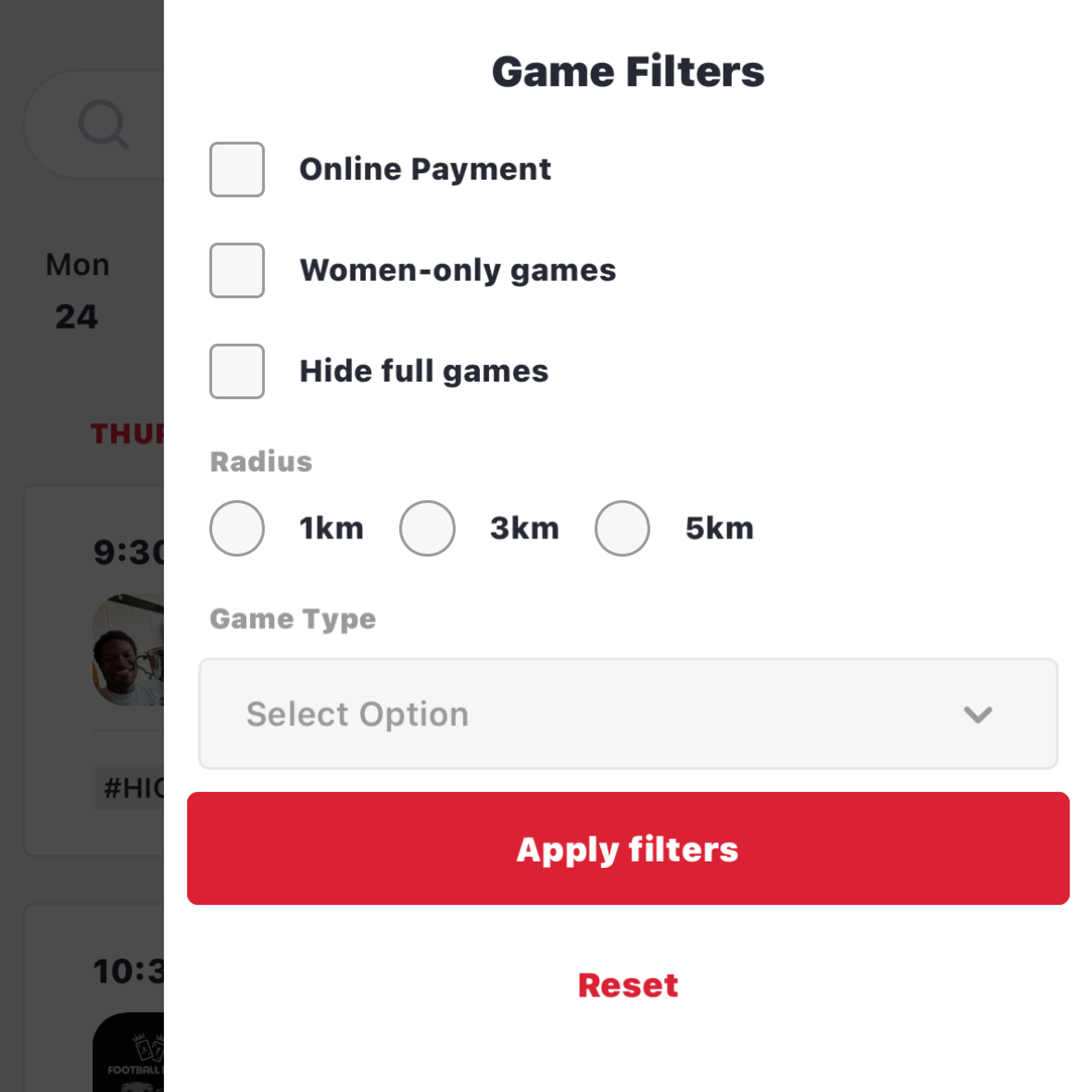
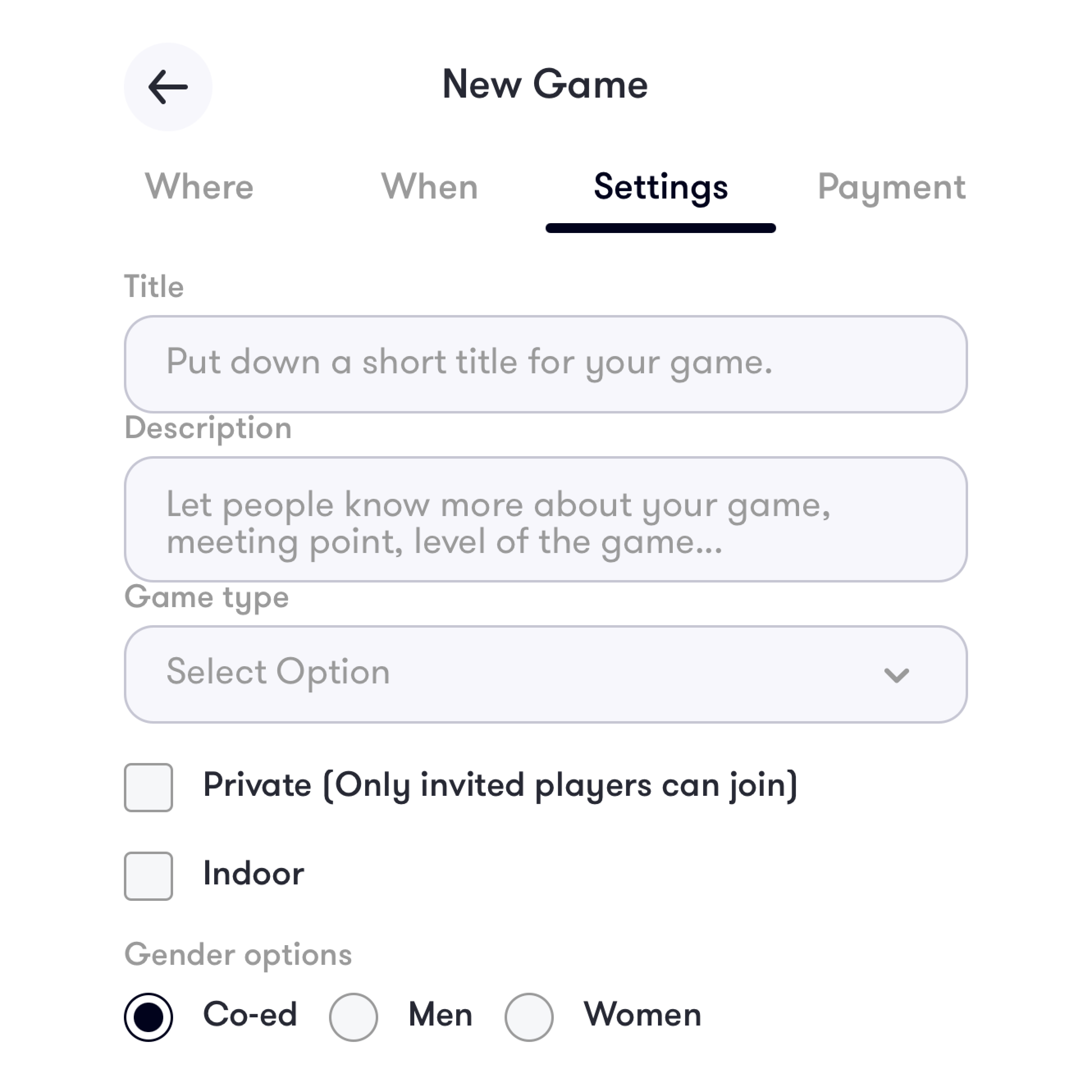

User Interviews
The Player's Opinion
I performed thematic coding of the interviews using affinity mapping in Figma to highlight my findings.
Participants: 6 users (3 regular players, 2 occasional, 1 host)
Format: 30–40 min semi-structured interviews over Google Meet
Objective: Identify core pain points and behaviour patterns
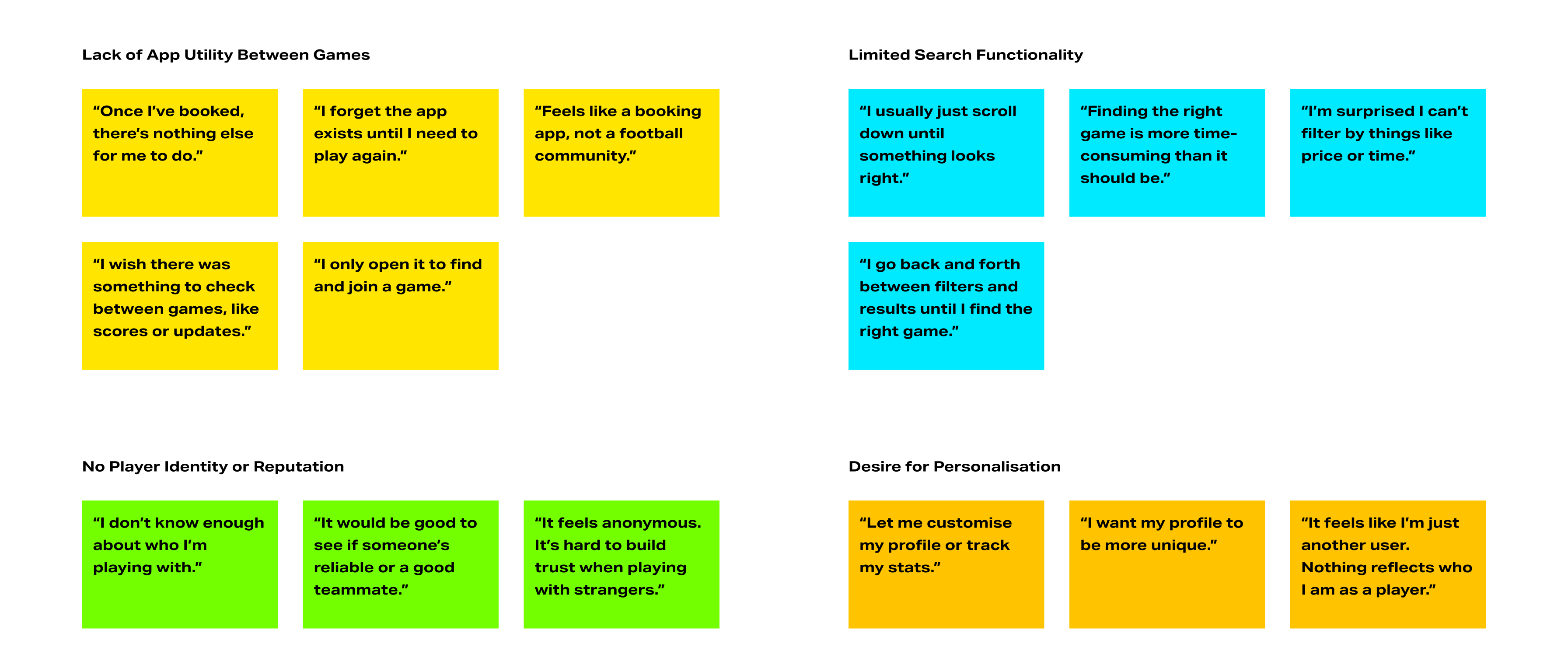
Users lacked compelling reasons to engage with the app outside of match booking. Better search functionality, personalisation and recognition were key missed opportunities.
Competitive Benchmarking
A look at How its done
I analysed 3 indirect competitors, comparing them alongside the Footy Addicts app:
- Strava – fitness tracking and social sharing platform
- Meetup – event and community organising app
- TeamSnap – team management tool for sports groups
Focus: Social features, notifications, gamification, profiles
Objective: Identify successful engagement and community-building strategies

Design Recommendations
From the discoveries made through research, I formed a list of actionable steps to improve the overall app experience.
Feature Prioritisation
To rank these solutions I assessed the potential impact vs. effort needed to include.
Research Conclusions
While Footy Addicts effectively supports match booking and discovery, research revealed that its value largely stops there. Users view the app as a transactional tool, with limited features to keep them engaged between matches. The issues discovered contribute to a flat experience that lacks personal relevance or incentive to return.
Across user interviews, competitive analysis, and a UX audit, a clear opportunity emerged: to transform Footy Addicts into a more engaging, community-focused platform. By addressing these various user needs, the app can grow into a dynamic space that fosters not just game participation, but lasting player involvement and loyalty.
Design
I partnered with a product designer during this phase, and set out to explore solutions from the insights gathered.
We clarified our objectives to better guide the redesign:
USer Personas
Narrowing Our Focus
We began by developing personas to represent the app's primary user group, the players. While the motivations and behaviours of organisers (creating matches) and hosts (assisting during a match) differ, we knew targeting players would serve the majority and could also benefit these other users at the same time.
Gamification
Finding the fun
Gamification is an approach used to increase user retention, engagement and motivate users to take specific actions. This process involves utilising game mechanics like points, badges and leaderboards to encourage user activity towards specific goals. We applied this strategy as the foundation of our redesign in order to foster a new sense of enjoyment for users.
Player Archetypes
Based our set of objectives and user personas, we defined the types of players that could be found on the app, describing the motivations that influenced their behaviour. This information was represented as player archetypes, to which we would create the game mechanics around.
Game Mechanics
To drive meaningful user engagement, we designed a gamified framework based on dynamic motivators. Importantly, each mechanic was carefully selected to complement the user journey without obstructing the platform's core functionality.
A Personalised Experience
Developed from our player archetypes, we defined four core behavioural attributes: Performance, Attendance, Support, and Creativity, and mapped each user action to one or more of these attributes. Each user would develop these attributes differently based on how they interacted with the app, and in turn develop a unique Footy Addicts identity that changes and grows from their ongoing participation.
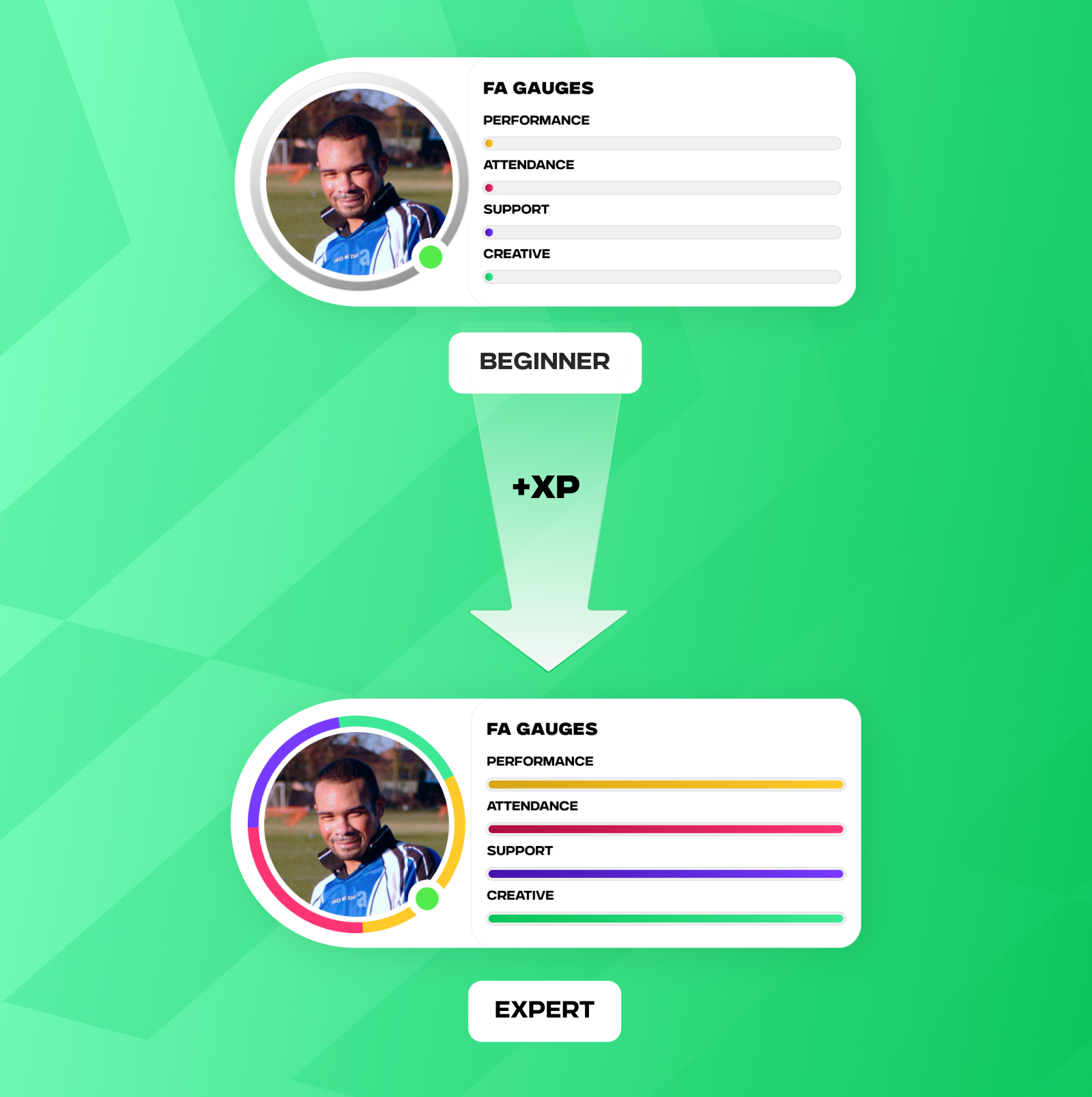
A System to Reward Player Actions
By performing desired actions, users gain experience points (XP) and level up, gaining new titles that represent their total progress, creating a desire to consistently engage with the platform.
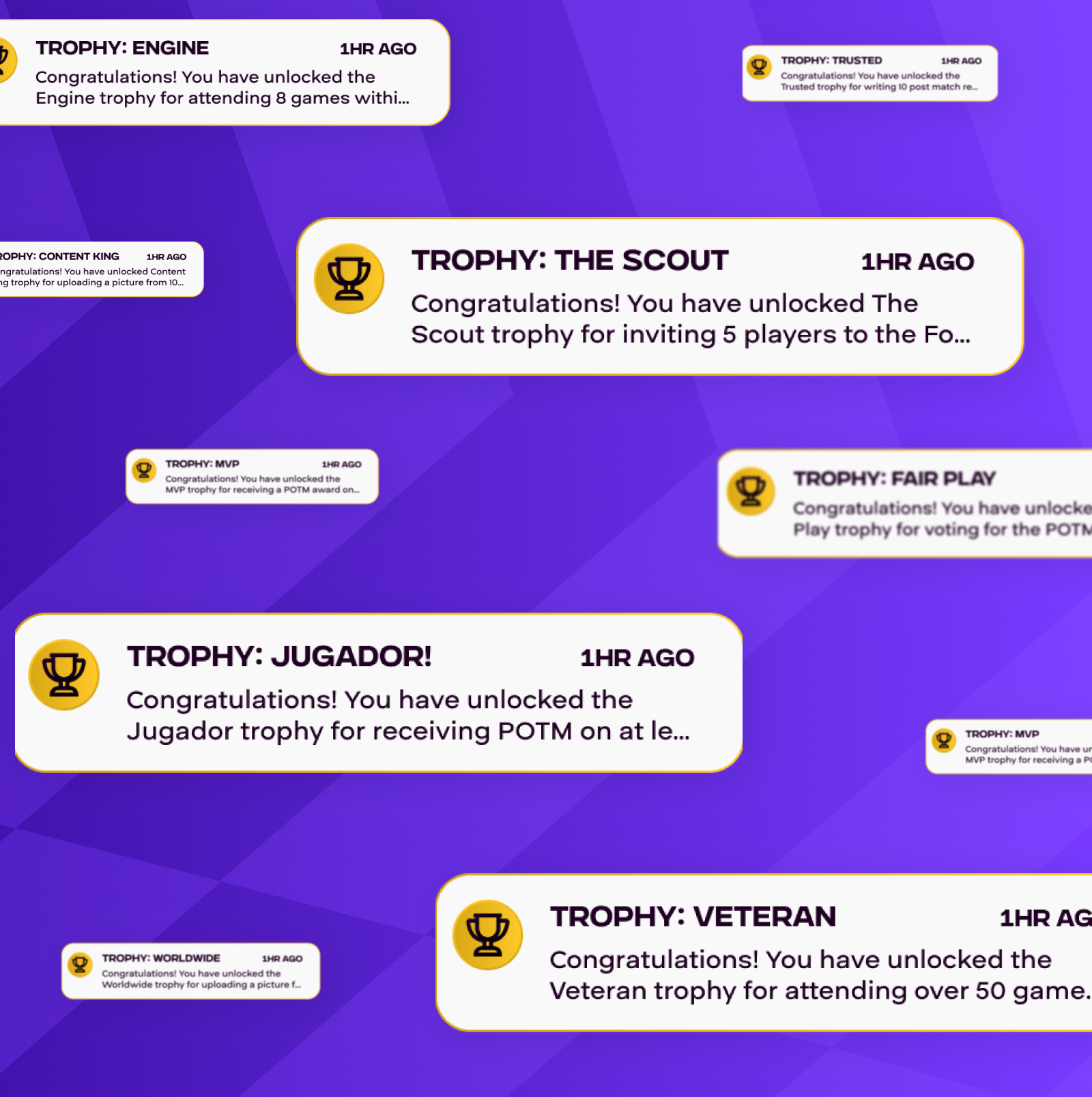
Unlockable Achievements
Achievements mark key milestones, providing players with a track record of their in-game accomplishments, increasing player motivation. We introduced these achievements to notify player progress towards specific performance attributes.
Reworking the Platform
After agreeing on a proposed gamification strategy, we shifted our focus to enhancing the system. The new gamification changes would be ineffective without a strong UX and visual identity to support the level of engagement that gamification can achieve.
This step required us to evaluate the platform's structure, user interface and brand aesthetics in order to create design components that users expect from a modern app.
Object-oriented UX
An OOUX Approach
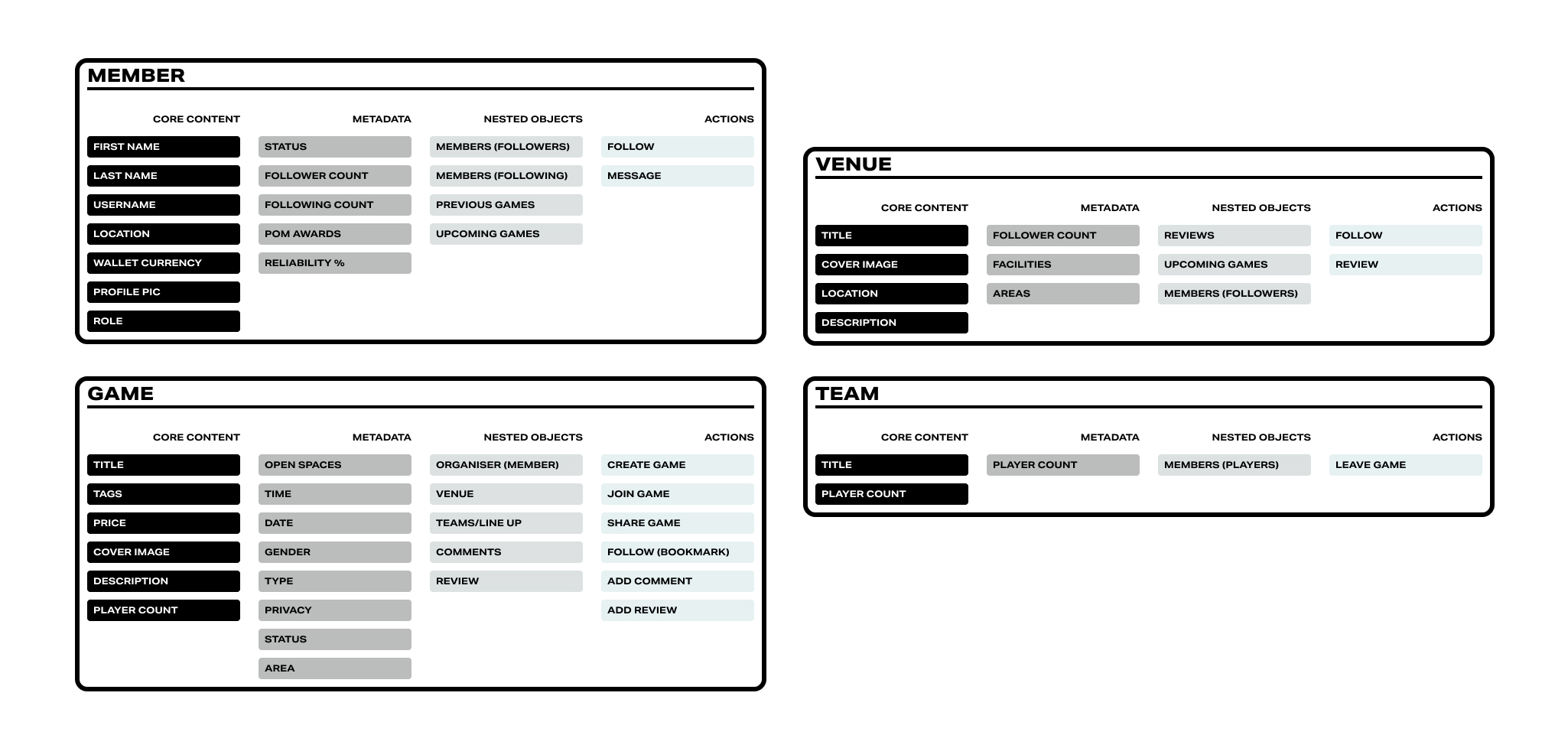
Visualising the objects
We created an object map that illustrated the structure of each object, detailing the various types of content it contained. This provided a better understanding of the objects, and ensured they could be accurately translated into design components.
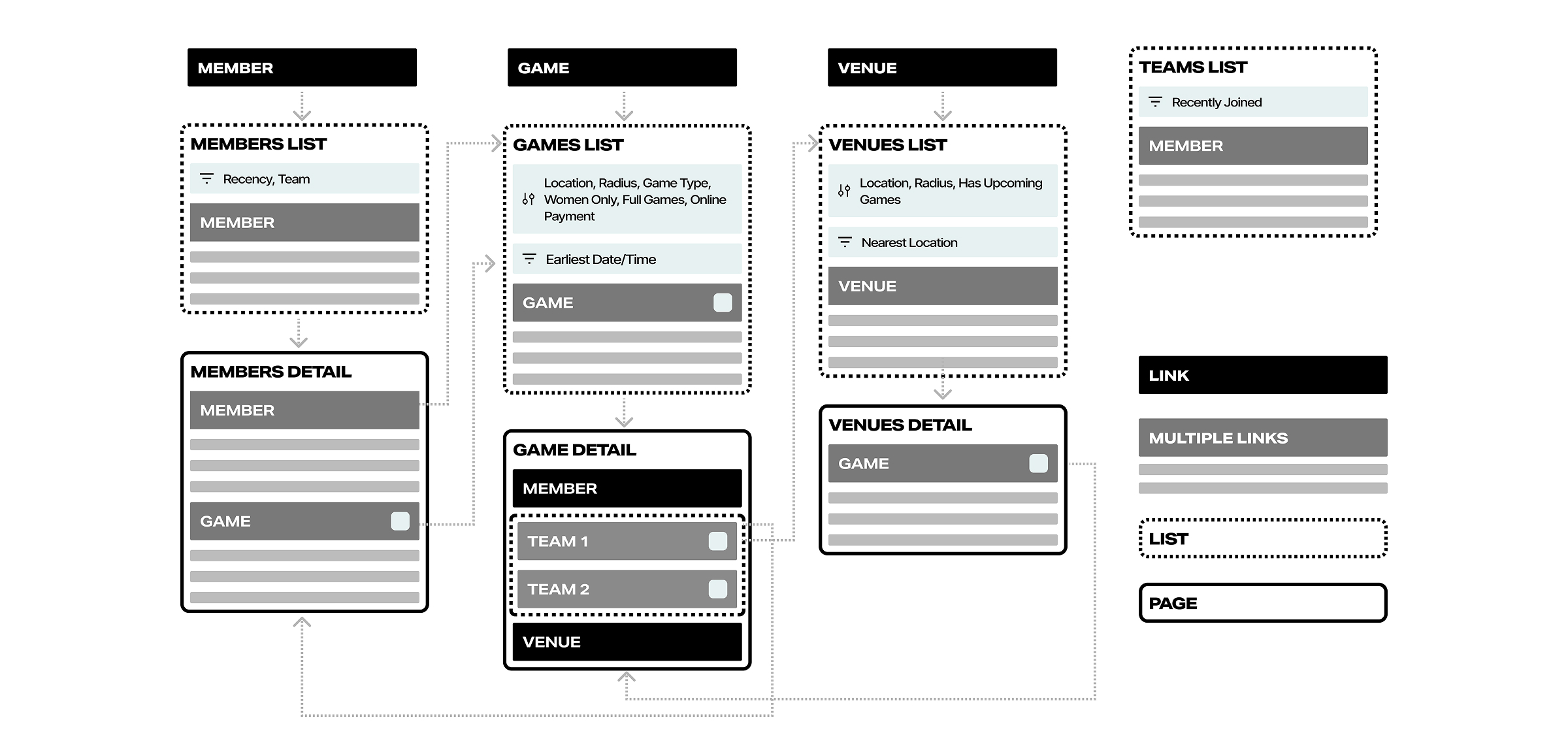
Visualising the System
Defining a navigation flow for the objects, details how users moved between the screens and the particular elements that linked them together. Similar to a site map, this provides a holistic view of the current system.
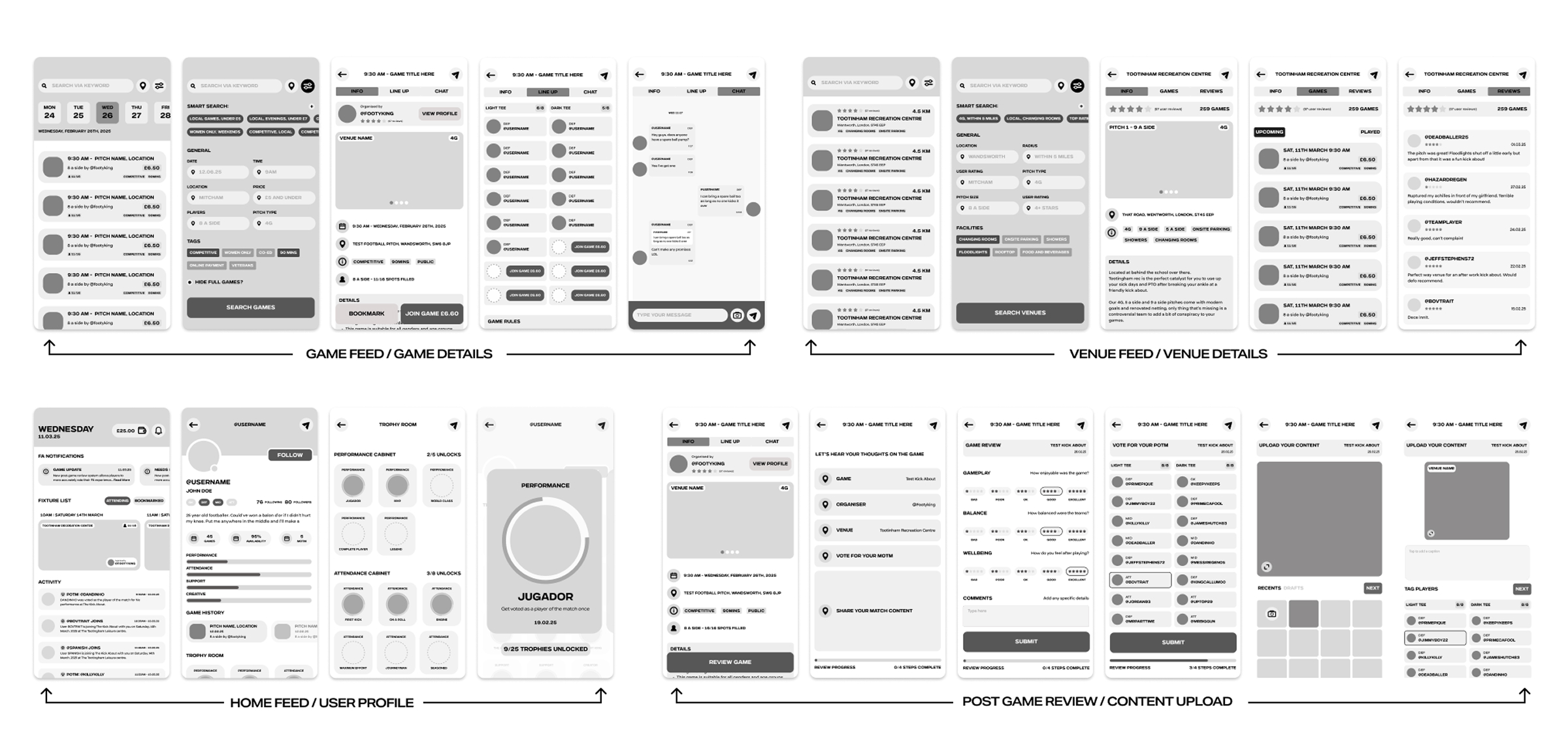
Mid-fidelity Wireframes
Upon understanding the relationships between the objects across pages, we then set out to map the individual pages. We achieved this through wireframes that highlighted the main pages and the key actions users could perform on them, this helped us to experiment with and display our proposed UX/UI improvements.
Design Solution
In breaking down the app into its fundamental building blocks, we ensured that our redesign was grounded in a deep understanding of how users interact with key elements. Translating this understanding into wireframes allowed us to design high-fidelity components and screens, creating an intuitive and scalable design system.
Below we've highlighted the key functions and features of our redesign to showcase how the proposed gamification strategy and design system would look as a real-life product.
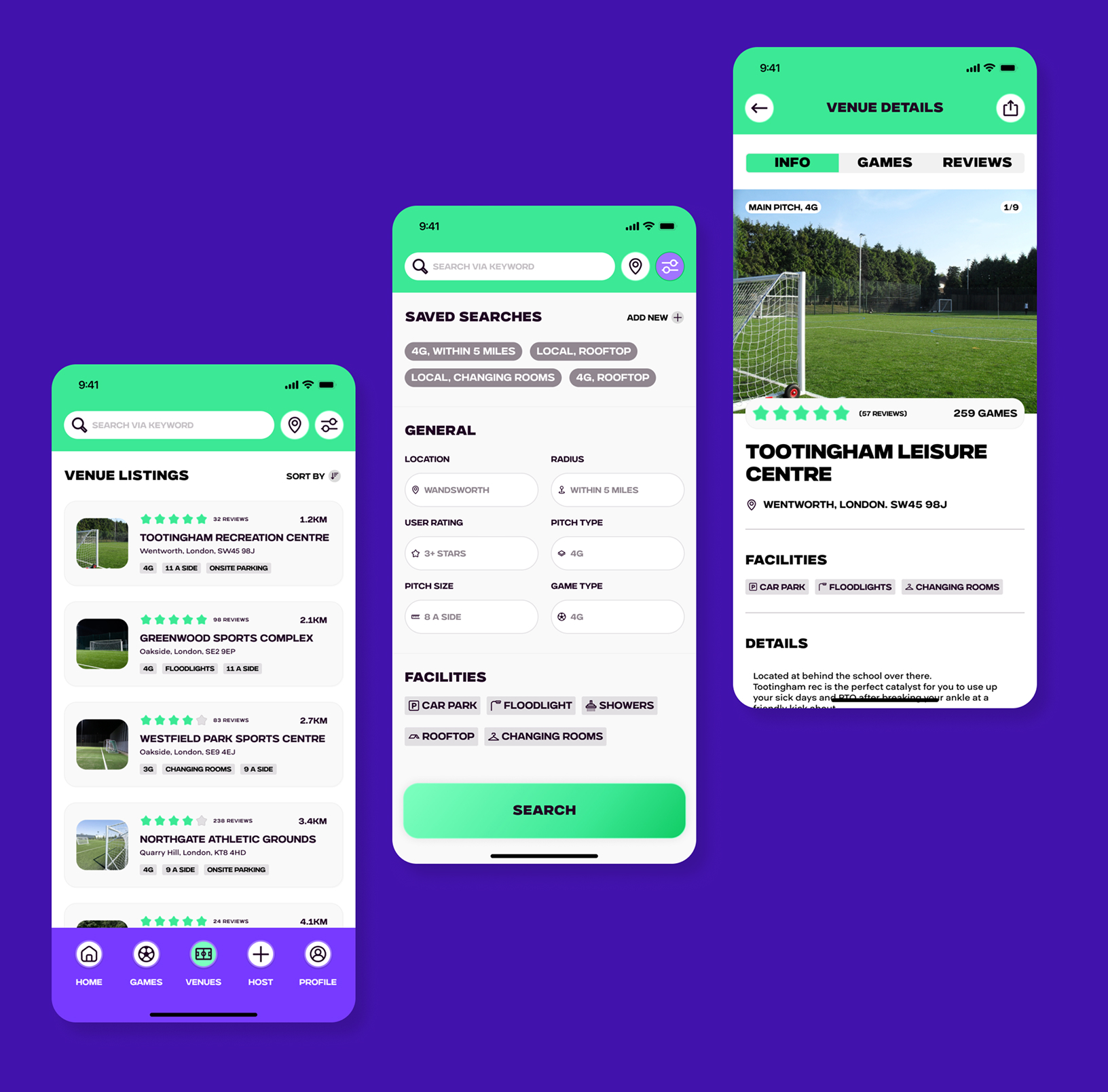
Venue Feed / Details
The venue feed was re-designed with an emphasis on adding more intuitive search filters to improve results.
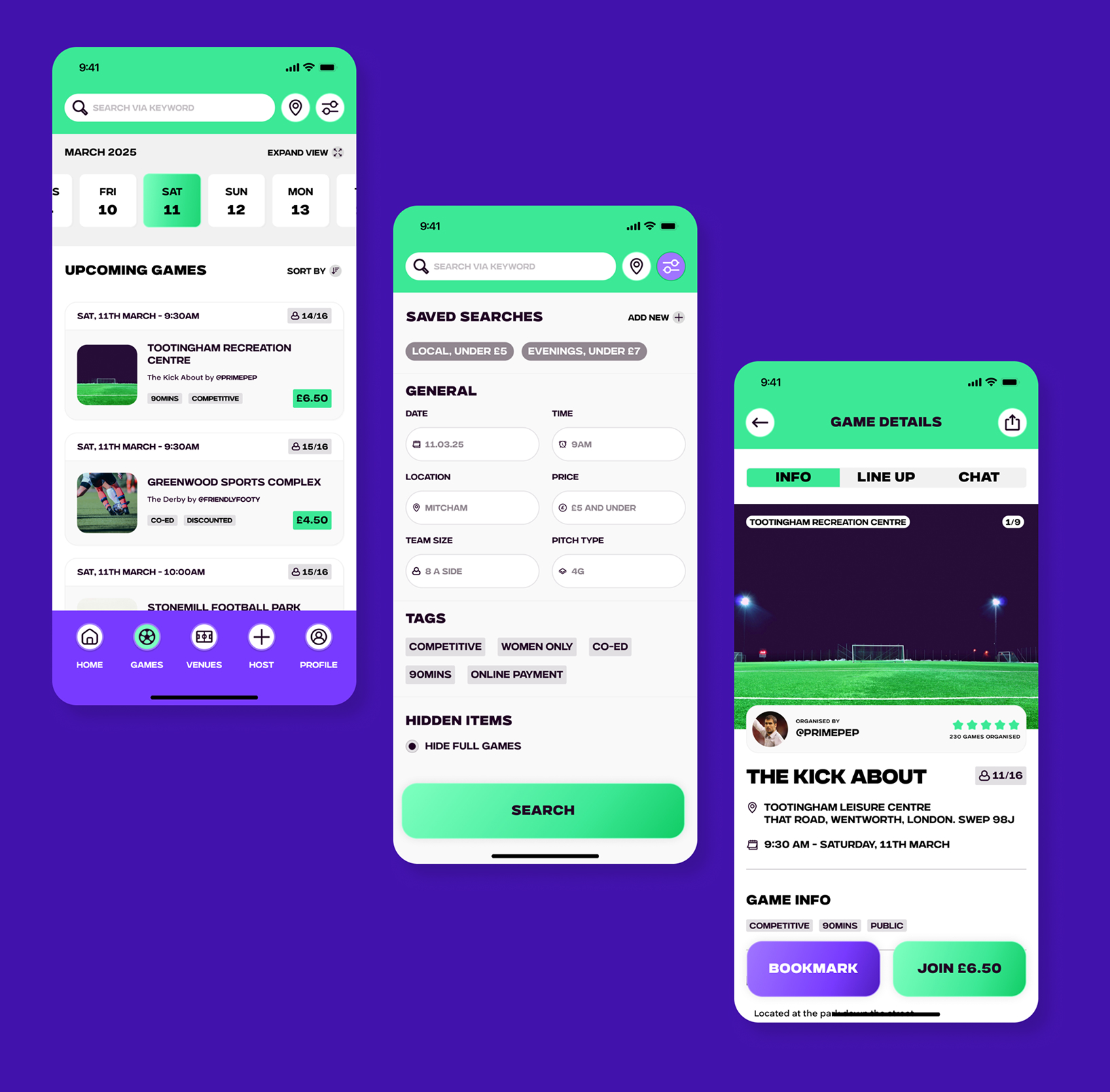
Game Feed / Details
Much like the venue screens, the game feed/details page were also updated with an improved filtering system, and an aesthetic upgrade.
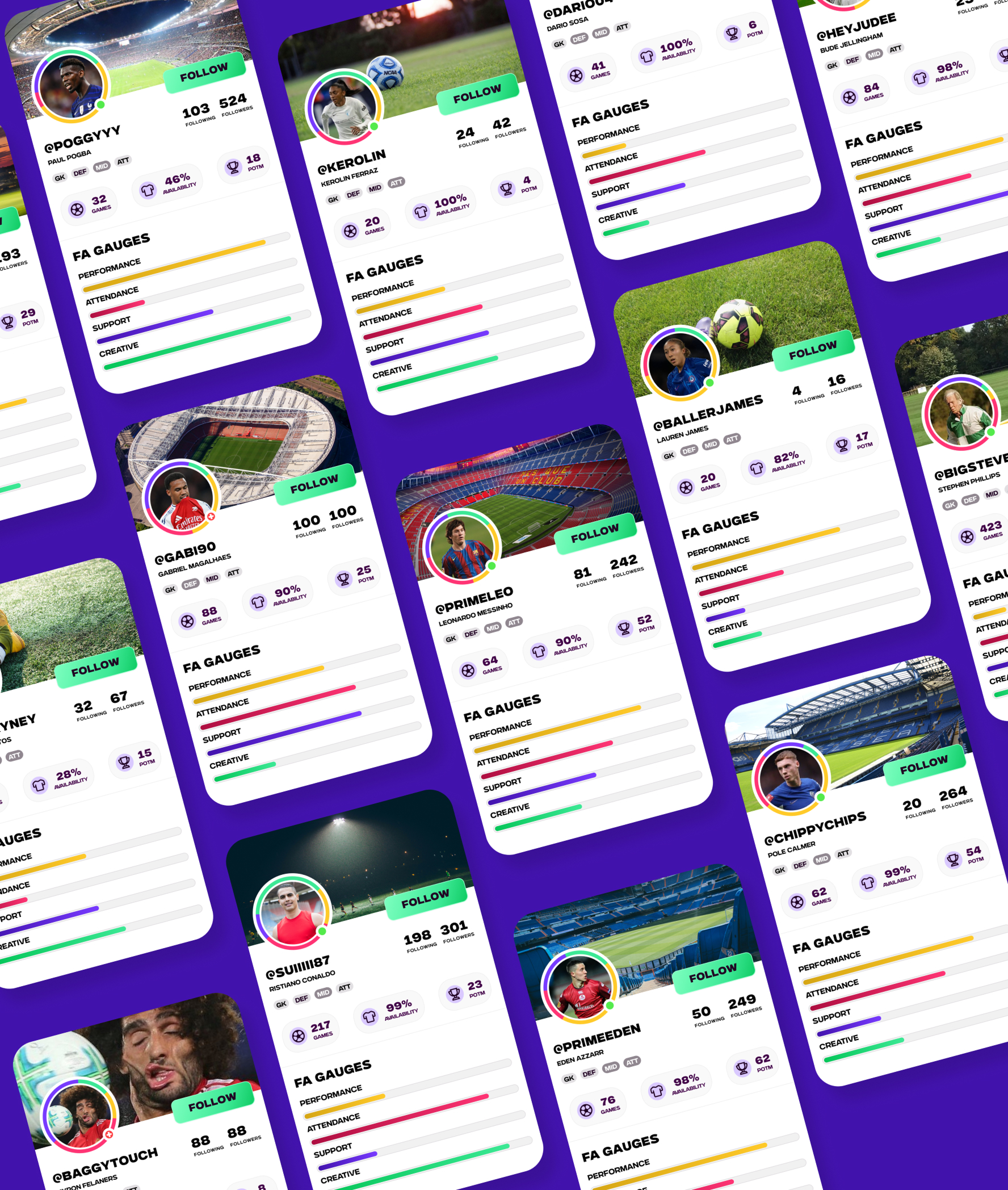
Player Attributes (FA Gauges)
The game mechanics we established in earlier stages of our research enabled us to create player attribute gauges. These gauges serve as a summary of each player's experience using the app, progressing when desired actions are performed and milestones are achieved.
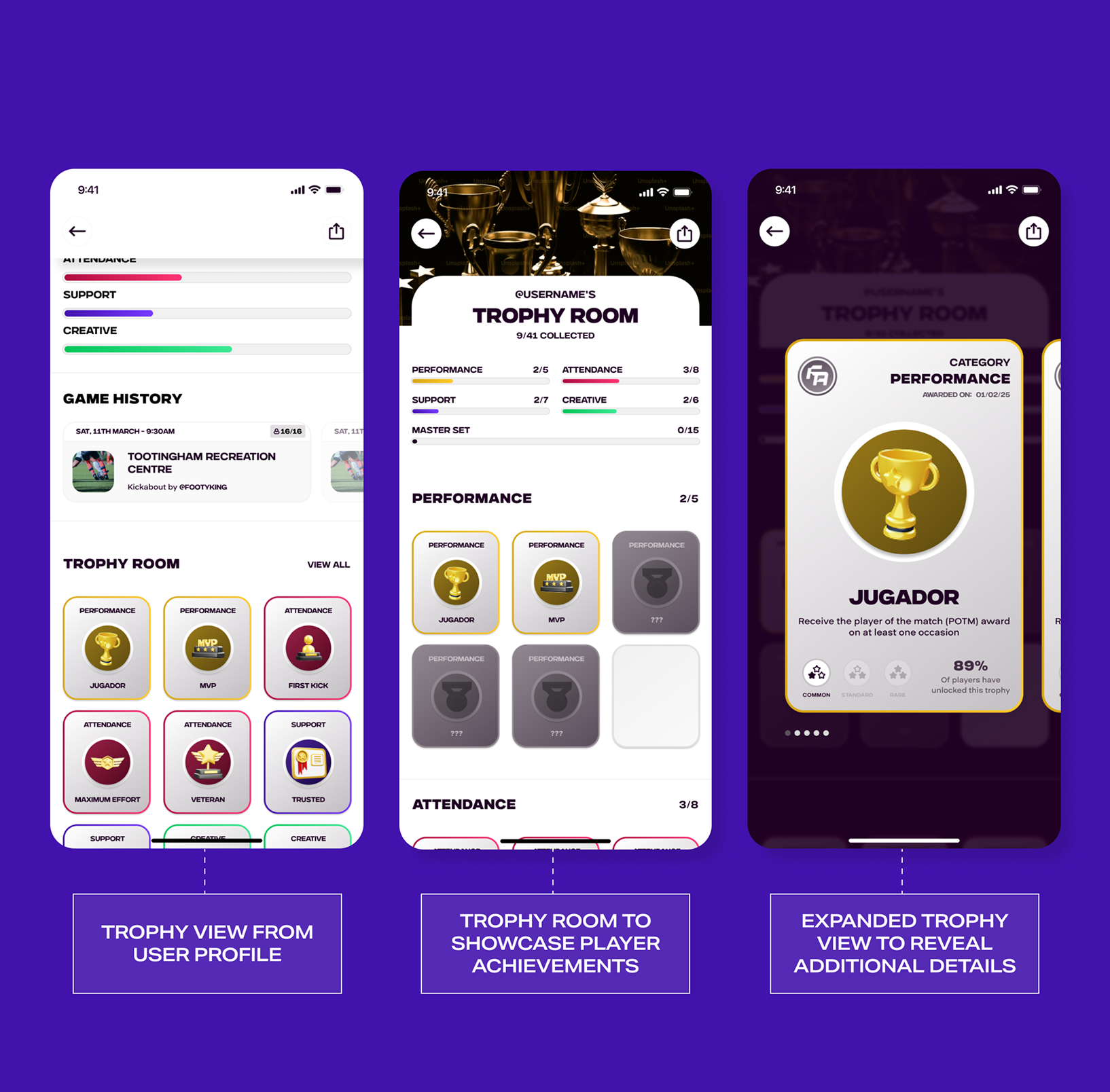
Trophy Room
Trophies are rewarded are when milestones are achieved. The trophy room is a section on the user profile where user rewards and trophies are stored and showcased.
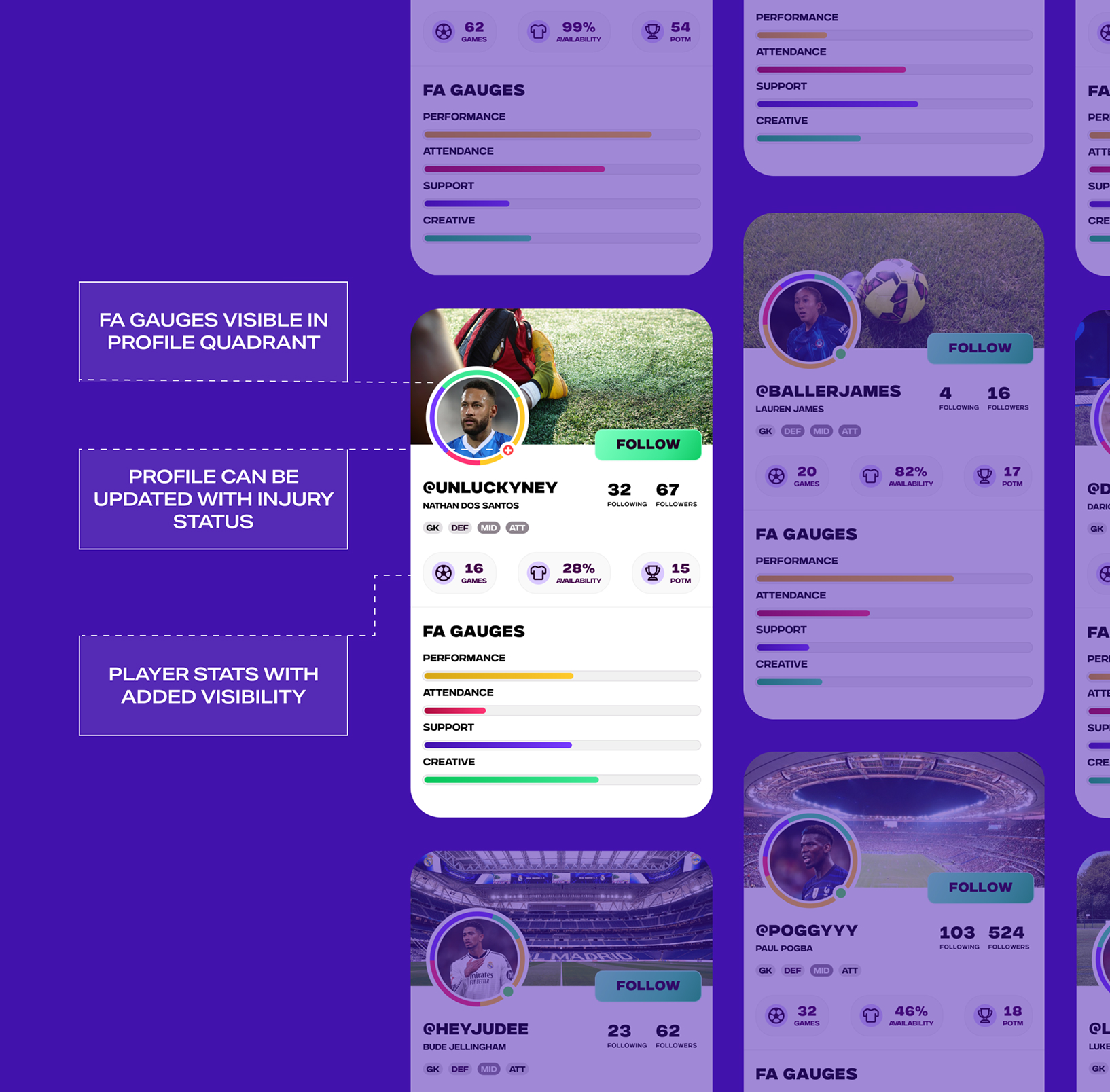
Profile Breakdown
User profiles display a summary of stats, and rewards achieved from playing matches and engaging with the app.
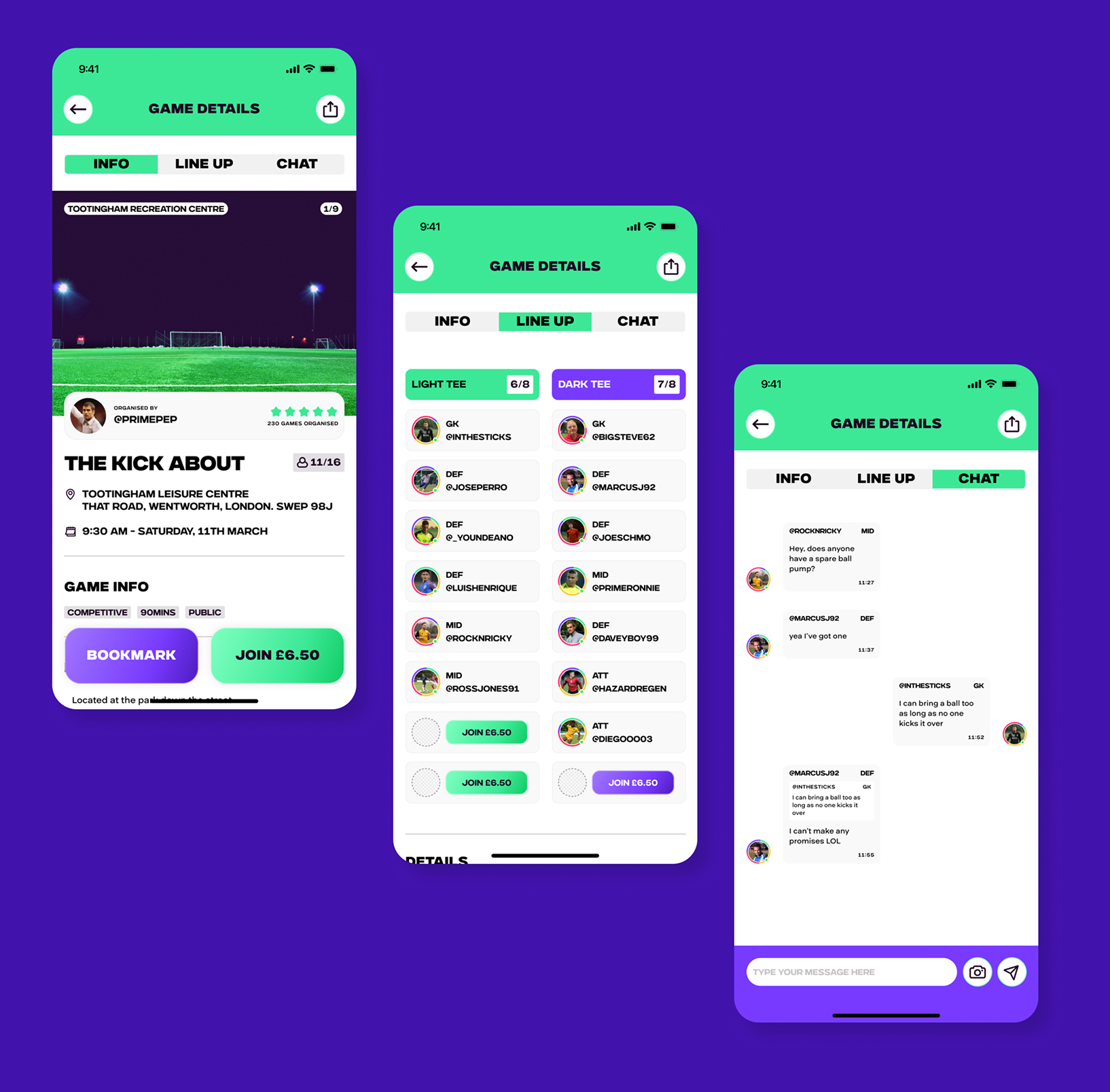
Engaging Games
A refreshed look and feel across the game screens provide better information into the games that can be joined, and insights into the type of players they will play with.
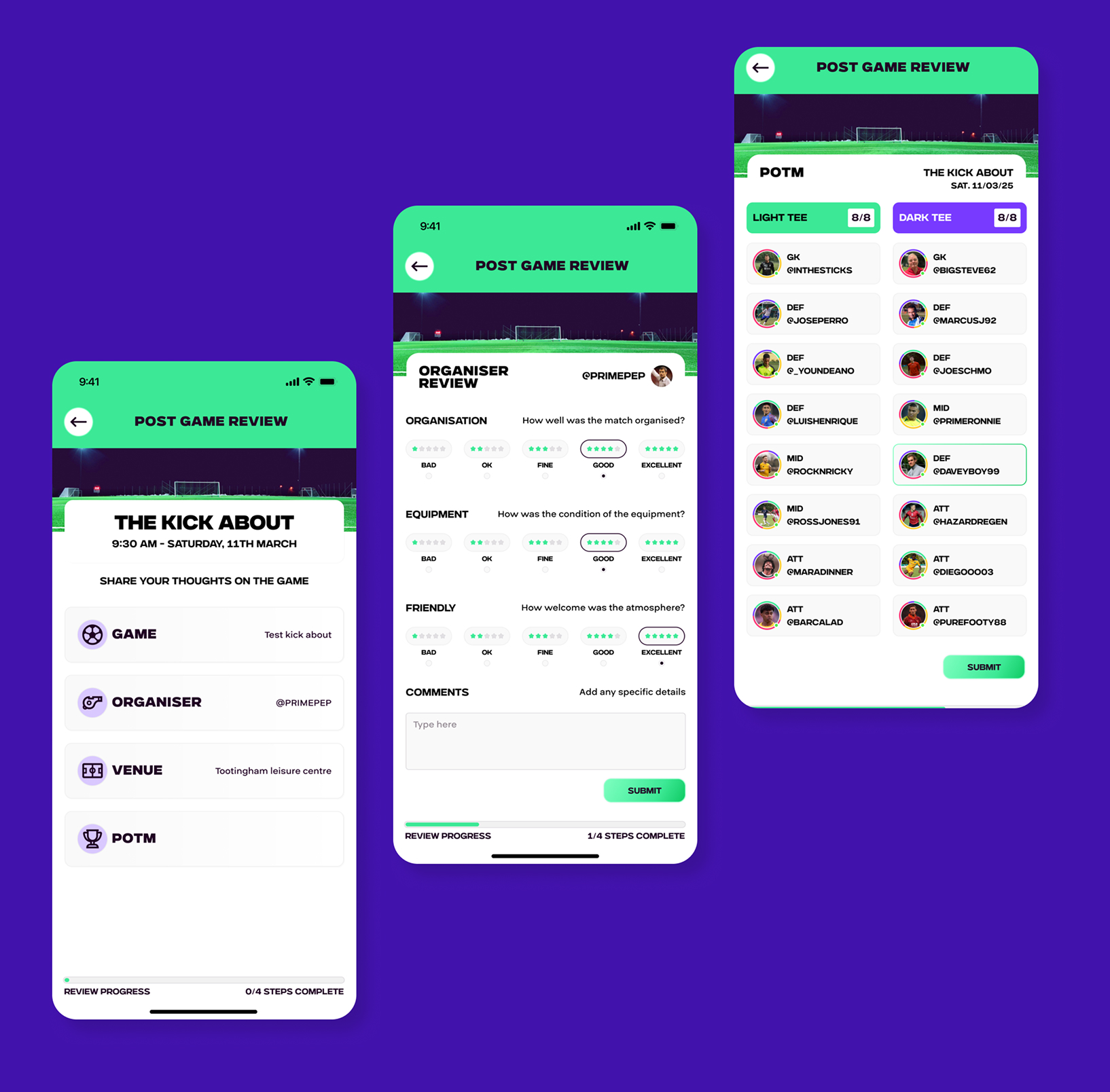
Improved Feedback Loop
To improve the post-game engagement, we reimagined the review process, allowing for better feedback to be collected at a higher frequency.
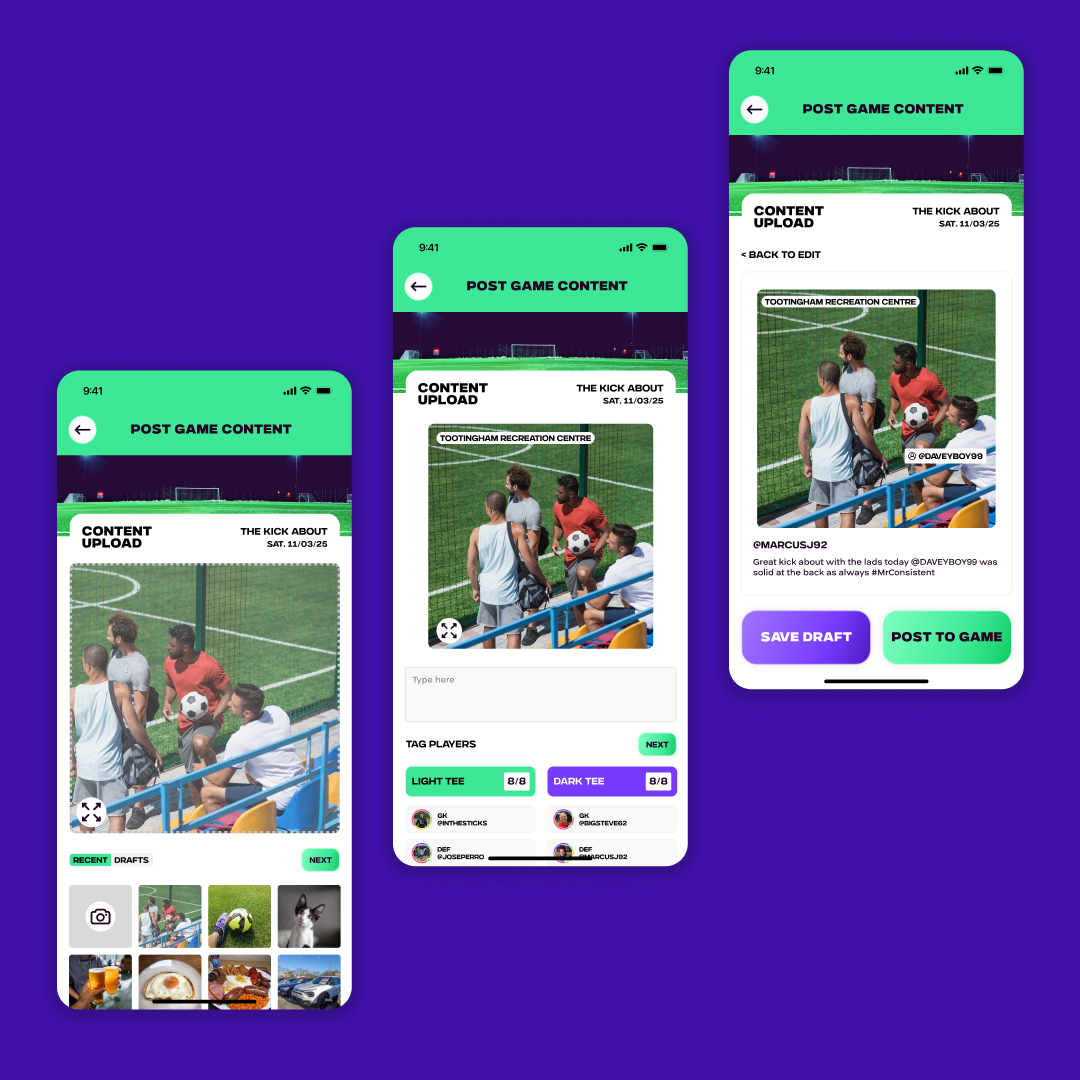
Content Uploading
Adding photo and post uploads increase social interactions, boost appreciation for recent games and anticipation for upcoming matches.
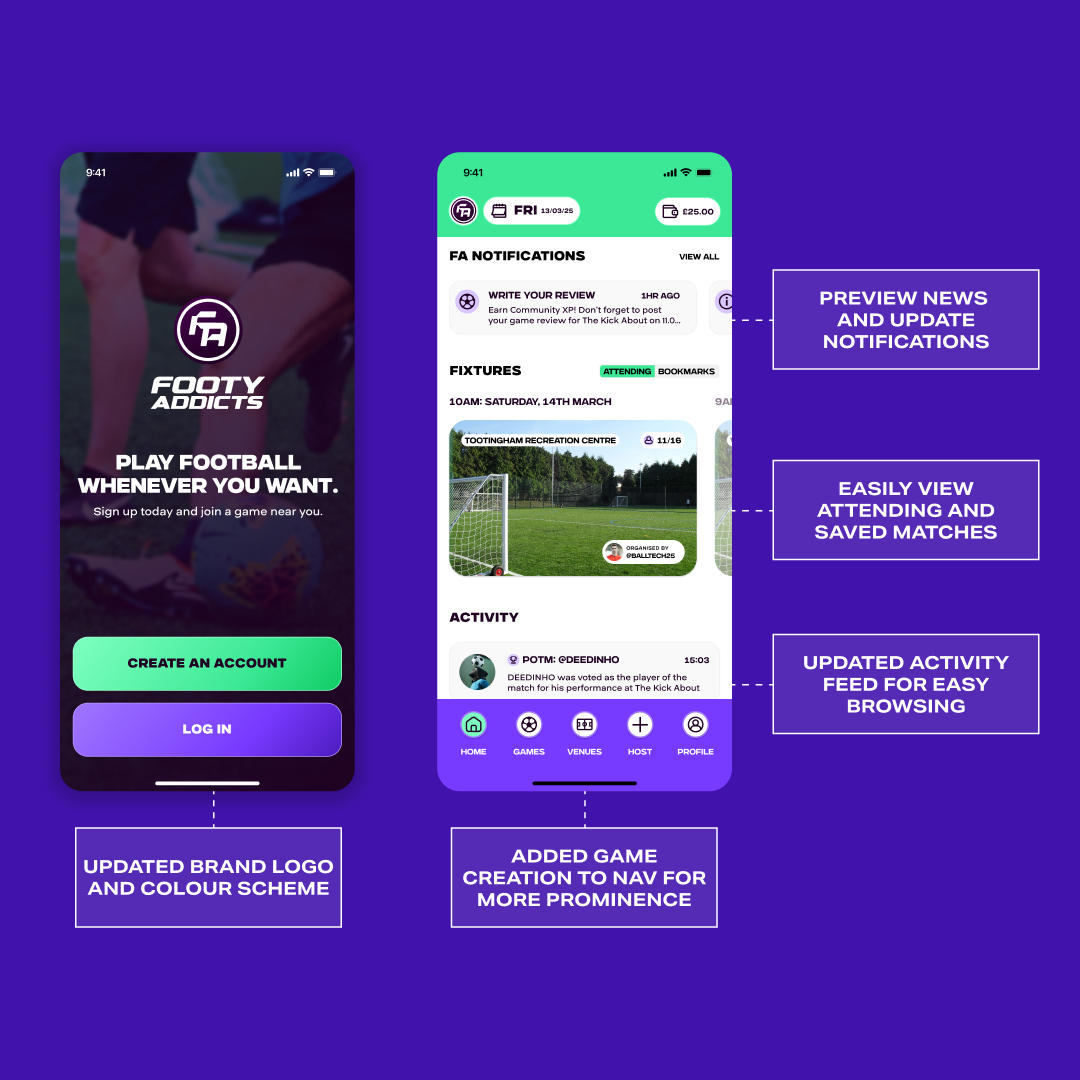
Renewed Login & Home Feed
As part of the brand redesign the logo and design system were updated. We also revised the home feed to make it more engaging and useful.
Test
Prototype Validation
We tested the look and feel of the hi-fidelity designs with the same 6 users from our initial interviews and found they all rated the prototype 'more engaging' than the current app. Without creating a live prototype with sample data we couldn't test the functionality of the other solutions proposed.
With more time and resources available we would have performed more in depth user testing, and conducted diary studies to assess the sustained engagement over several weeks.
